This post is a brief follow-up to the blog, Shouldering the Responsibility of Push-Ups from January 2012. Pilates emphasizes strengthening without straining. The Pilates Method essentially breaks down patterns of movements to help identify weaknesses within our bodies. Pilates reorganizes the information from our brain to our body to correct these imbalances. Most clients are pleasantly surprised at how much fun the Pilates equipment adds to strenghthening, stretching, and balancing our body.
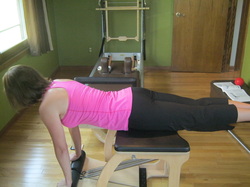
The Prone Triceps on the Pilates chair resembles and assists in teaching proper execution of the classic pushup. The chair supports the pelvic-lumbar region making it less likely to collapse (i.e. the arching back/sagging hip issue). The classic pushup avoids adducting (drawing together) and elevating the scapulae. Typically, when we observe people doing pushups they are squeezing their shoulder blades together and the shoulders hinge up to their ears--this is compensatory. The chair assists in training strength requiring the trunk and scapulae to stay stable, while movement (bending and straightening the elbows) occurs in the arms.
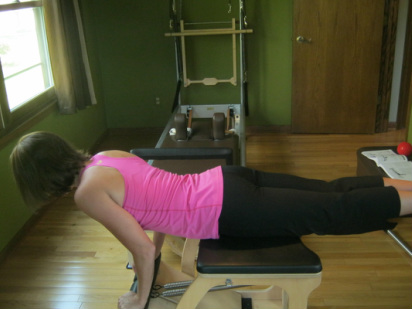
What Not To Do: During the push-up process, I lost the length of my sternum reaching across the room.--the front of my body should be a bit more parallel to the ground. I needed an on-site instructor to call my attention to my less than optimal position! My 11 year old photographer was anxious to complete her assignment and of little assist to my technique. What was correct however, was hugging the elbows close to the ribcage, the equivalent of a triceps push-up.
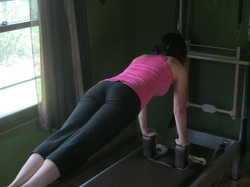
Planks can be performed in a variety of positions on the reformer. This Balance Control Front requires co-contraction of the abdominal muscles and the back extensors to create necessary stabilization and support for the movement. Movement of the carriage occurs as you flex and hinge at the the shoulders pushing the carriage toward the back of the reformer and then controlling the carriage back to the starting position.
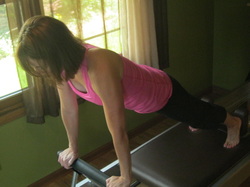
The Plank/Long Stretch provides the feeling of being catapulted out of a cannon. This exercise takes the familiar push-up and plank to a new level requiring precision, control and core strength with movement and spring resistance.
References: Rael Isacowitz...Pilates (Complete Guide to Mat Work and Apparatus Exercises)
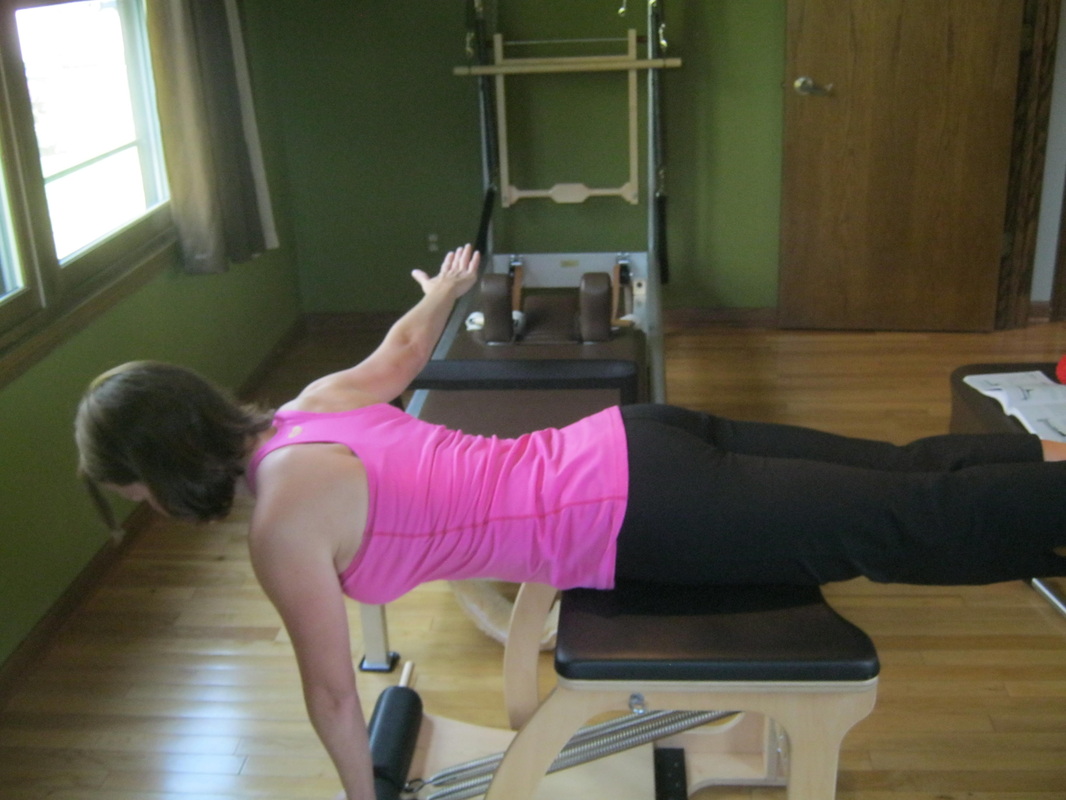
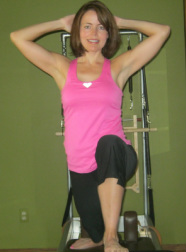
 RSS Feed
RSS Feed